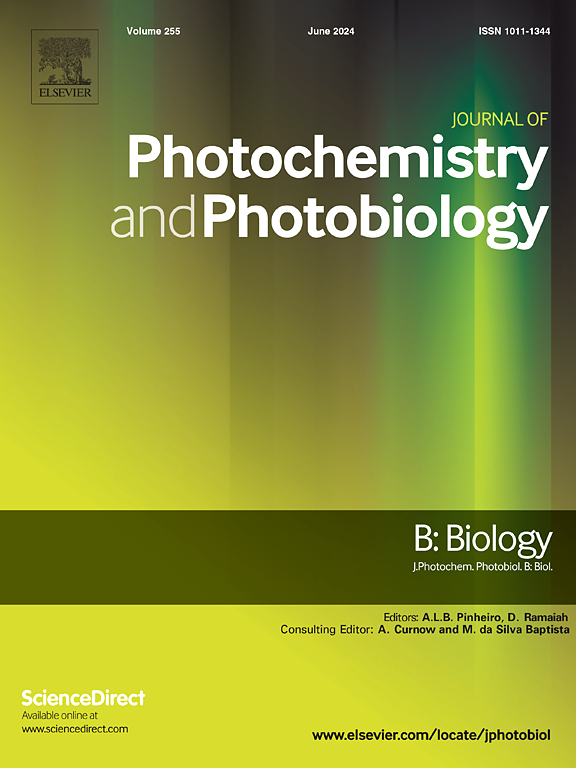Rapid penetrating inactivation and disinfection through ice layers by light-condensed deep ultraviolet LED irradiation
IF 3.7
2区 生物学
Q2 BIOCHEMISTRY & MOLECULAR BIOLOGY
Journal of photochemistry and photobiology. B, Biology
Pub Date : 2025-04-14
DOI:10.1016/j.jphotobiol.2025.113154
引用次数: 0
Abstract
The longer survival of virus and bacteria under low temperature greatly accelerates the infection risk and duration. How to effectively and rapidly inactivate them beneath ice layer in cold chain logistics has been an important issue never being well studied. Here, we demonstrate a novel light condenser design of high power UVC-LED device for rapid penetrating inactivation through ice layers. With fish-scale, ellipsoidal and alumina coated condenser, a portable UVC (275 nm) LED device in ultrahigh light output power (> 3 W) was fabricated in a narrowed propagation angle (< 60o). Such condensed light beams are able to overcome the interfacial refringence at the ice and bubble interfaces in different types of ice layers for enhancing the transmission rate. As a result, the penetrating UVC light could give rise to the effective necrosis and apoptosis influence as well as DNA/RNA destruction on cells. A 99.99 % inactivation rate of Escherichia coli and Staphylococcus aureus has been obtained through 5-mm-thickness opaque ice layer. By 1.5 s irradiation, SARS-COV-2 virus can be completely inactivated and disinfected. This work proved the strong power of UVC-LED for cold chain disinfection applications.

采用光凝深紫外LED照射,通过冰层快速穿透灭活消毒
病毒和细菌在低温下存活时间的延长,大大加快了感染的风险和持续时间。在冷链物流中,如何在冰层下有效、快速地灭活它们一直是一个重要的问题,但从未得到很好的研究。在这里,我们展示了一种新型的高功率UVC-LED器件的光聚光器设计,用于快速穿透冰层灭活。采用鱼鳞、椭球体和氧化铝涂层聚光镜,一种超高光输出功率的便携式UVC (275 nm) LED器件(>;3w)在窄传播角(<;60 o)。这种压缩光束能够克服不同类型冰层中冰和泡界面处的界面折射,从而提高传输速率。因此,穿透性UVC光可以对细胞产生有效的坏死和凋亡影响以及DNA/RNA破坏。通过5mm厚度的不透明冰层,大肠杆菌和金黄色葡萄球菌的灭活率达到99.99%。辐照1.5 s可使SARS-COV-2病毒完全灭活和消毒。这项工作证明了UVC-LED在冷链消毒应用中的强大功能。
本文章由计算机程序翻译,如有差异,请以英文原文为准。
求助全文
约1分钟内获得全文
求助全文
来源期刊
CiteScore
12.10
自引率
1.90%
发文量
161
审稿时长
37 days
期刊介绍:
The Journal of Photochemistry and Photobiology B: Biology provides a forum for the publication of papers relating to the various aspects of photobiology, as well as a means for communication in this multidisciplinary field.
The scope includes:
- Bioluminescence
- Chronobiology
- DNA repair
- Environmental photobiology
- Nanotechnology in photobiology
- Photocarcinogenesis
- Photochemistry of biomolecules
- Photodynamic therapy
- Photomedicine
- Photomorphogenesis
- Photomovement
- Photoreception
- Photosensitization
- Photosynthesis
- Phototechnology
- Spectroscopy of biological systems
- UV and visible radiation effects and vision.

 求助内容:
求助内容: 应助结果提醒方式:
应助结果提醒方式:


